|
Marc Kuchner NASA Goddard Space Flight Center Exoplanets and Stellar Astrophysics Laboratory Code 667 Greenbelt, MD 20771 PHONE:(301)286-5165 FAX:(301)286-1752 Marc.Kuchner at nasa.gov CV and Publication List |
|
|
I'm an astrophysicist; I work on both theoretical and observational projects related to directly imaging extrasolar planetary systems. I'm also the Citizen Science Officer for NASA's Science Mission Directorate, helping look after 22 NASA citizen science projects connecting more than 1 million volunteer scientists around the world. Here are some of my personal scientific projects and interests. |
||

|
The Backyard Worlds: Planet 9 citizen
science project searches for new planets in the outer solar system and free-floating planets
in the solar neighborhood. We have found more than 1200 likely brown dwarfs, a bizzare
co-moving brown dwarf pair, and a
record-breaking
"crystal ball" white dwarf.
For the latest project results, see the Backyard Worlds: Planet 9 Blog.
|
|
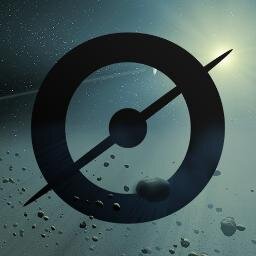
|
The Disk Detective citizen science project is scouring the data archive from the WISE all-sky
survey to find warm dust around nearby stars: protoplenatary disks and debris disks.
Disk Detective volunteers helped discover a new kind of disk, the "Peter Pan" disks.
These protoplanetary disks around M stars seem to have retained their primordial gas nearly
ten times as long as typical protoplanetary disks. In other words, they won't grow up.
For the latest results, see the Disk Detective Blog.
|
|

|
A hard-to spot ring
of Asteroids Co-orbiting with Venus seems to be the most likely source of
the dust that follows Venus in its orbit. These asteroids remain in a
stable 1:1 resonance with Venus for the lifetime of the solar system. If this
analysis is correct, this new
ring of asteroids could be a source of dangerous Near-Earth Objects.
|
|
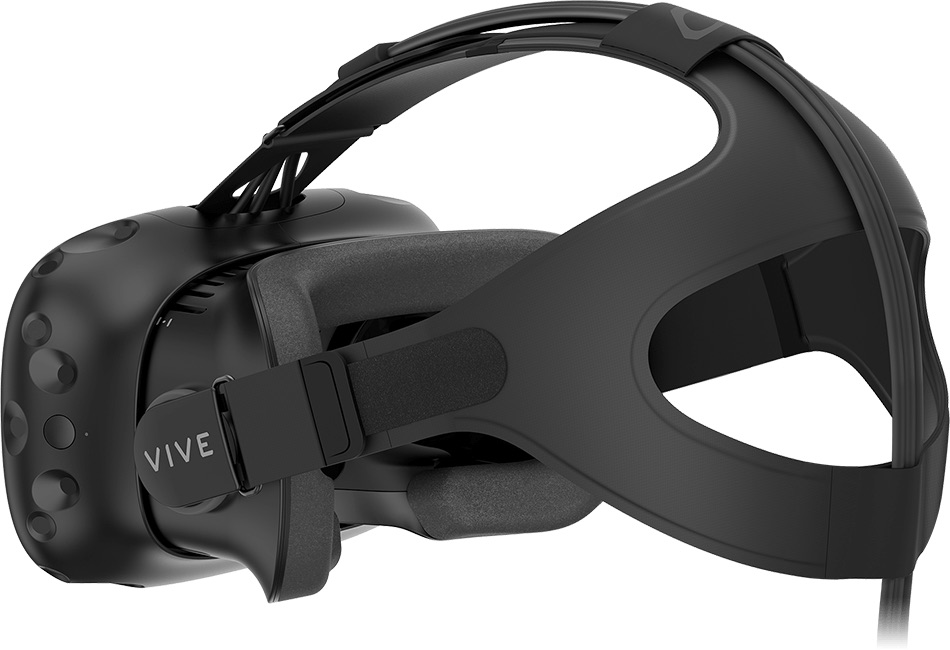
|
I'm applying Virtual Reality to help understand Galactic structure. By
visualizing Gaia data on nearby stars, we can find new members of young associations and
moving groups to help us define the timeline of planet formation. Note:
this is not an outreach project! But if you use an HTC Vive and you're inteterstead in
collaborating, send me a note.
|
|

|
Imagining New Kinds of Planets can help us decide where and how to look for
extrasolar planets.
Extrasolar planets are not necessarily like the ones in the solar system; they may
have completely different chemistries, like
Water Planets or
Carbon Planets .
Life on a carbon planet would be through-the-looking-glass. The processes of burning and
metabolism on Earth are oxidation (combining things with oxygen); on a carbon planet,
these processes would probably be replaced by reduction (combining things with carbon).
Artist Lynette Cook created this image of a Carbon Planet.
|
|
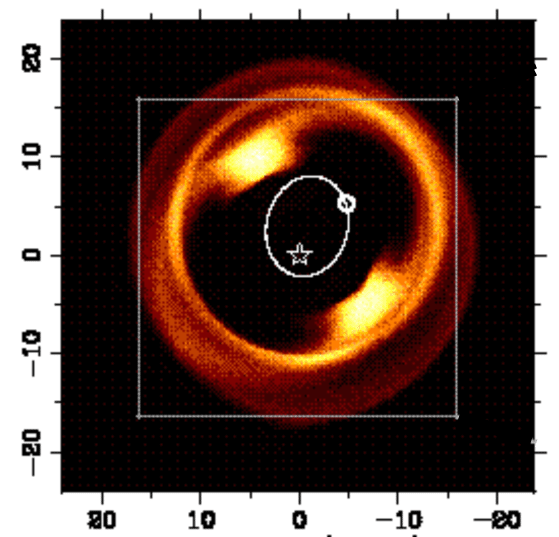
|
Our Sun sports a handsome disk of zodiacal dust, full of structures
due to the dynamical effects of planets. Here is an explanation, with illustrations,
of how planets on low-eccentricity orbits make rings and wakes in an optically thin
circumstellar dust cloud. Zodiacal dust around other stars is called Exozodiacal Dust.
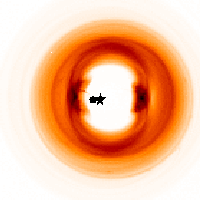 This animation shows what a few-jupiter-mass planet on an eccentric orbit (e=0.6) can do to a dust cloud. The solar system doesn't have any such planets, but extrasolar planetary systems often do. Millimeter maps of the debris around Vega show two blobs of emission at different distances from the star which may be the same phenomenon. However, this disk and other Debris Disks may be much more complicated than the solar dust cloud. Animation of Dust Orbiting Vega Press Release on Millimeter Maps of Vega Powerpoint Talk on Resonant Signatures in Debris Disks |
|

|
Here is the ZODIPIC package, an IDL program
for synthesizing images of exozodiacal clouds.
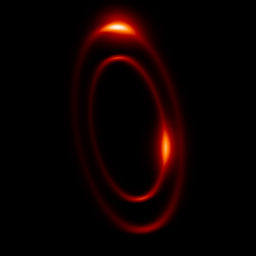 It also has enough tweakable parameters to serve as a
general-purpose modeling tool for optically-thin disks. To use it, you may
download zodipic
to your idl directory. Save the file as "zodipic.2.1.tar". Then
type
It also has enough tweakable parameters to serve as a
general-purpose modeling tool for optically-thin disks. To use it, you may
download zodipic
to your idl directory. Save the file as "zodipic.2.1.tar". Then
type tar xvf zodipic.2.1.tar to unpack the files (total about 57K). The README.zodipic file describes how to run the code. The picture above was made by running zodipic twice: zodipic, fnu1, 1, 0.5, inclination=60, positionangle=-10, ring=1, blob=1, pixnum=256, /noiterate, /nofan zodipic, fnu2, 1, 0.5, inclination=60, positionangle=-10, ring=1, blob=1, pixnum=256, /noiterate, /nofan, radring=0.72, earthlong=100 NEW! Zodipic Version 2.1. Includes dust with real optical constants, user-specified dust maps, and more! See also Kuchner, M. J., & Serabyn, E. 2001, submitted to ApJ Powerpoint Talk on ZODIPIC | |
|
|
||

|
On some cloudy nights, I like to write
Observing Manuals like this
guide to the Palomar 60" CCD Camera.
And here are some of my other Powerpoint Talks |
|

|
I am lucky to work with some talented
Graduate Students and Postdocs: Steven Silverberg Graduate Student, U. Oklahoma, Now a Postdoc at MIT Chris Stark Graduate Student, U. Maryland Physics Dept. Now a staff scientist at STScI Daniel Jontof-Hutter Grad. Student, U.M.D. Astronomy Justin Crepp Graduate Student, U. Florida, Astronomy Dept. Now an assistant professor at the University of Natre Dame. Erika Nesvold Graduate Student, University of Maryland Baltimore County Physics Dept. Now an astrophysicist and developer at Universe Sandbox Aki Roberge NPP Postdoctoral Fellow, GSFC. Now a staff scientist at GSFC. Ruslan Belikov NPP Postdoctoral Fellow, GSFC. Now a staff scientist at NASA Ames. Hannah Jang-Condell Michelson Postdoctoral Fellow, GSFC/UMD. Now an assistant professor at the University of Wyoming. John Wisniewski NPP Postdoctoral Fellow, GSFC. Now an assistant professor at the University of Oklahoma. John Debes NPP postdoctoral fellow, GSFC. Now a staff scientist at STScI. Thayne Currie NPP postdoctoral fellow, GSFC. Now a postdoctoral fellow at the University of Toronto. Margaret Pan NPP postdoctoral fellow, GSFC. Now a researcher at MIT. Veselin Kostov NPP Postdoctoral fellow, GSFC. Petr Pokorny Research Scholar, GSFC. | |

|
If you are in the DC area, please stop by and give a talk at the Goddard
Exoplanets Club. We meet on Tuesdays at 11:30am at Goddard
in Building 34, Room E215. |
|
|
Here are some possibly useful
Astronomy Links:
Q&A With Astronomy Magazine General Astrophysics with TPF Workshop General Astrophysics and Comparative Planetology White Paper Aspen Conference on Planet Formation and Detection February 6-12, 2005 JPL Docushare Princeton Seminar Series on Extrasolar Planets and Astrobiology Paw Points Database of Observational Mishaps Statistical Consulting Center for Astronomy Cosmic Dust General Astrophysics with TPF Workshop Synchrotron emission from extrasolar planets. General Astrophysics and Comparative Planetology White Paper Caltech Ge 167 CfA Star and Planet Formation Journal Club Astronomy Meetings CDS 270 Ephemerides SOFIA Exploring Neighboring Planetary Systems Harvard Extrasolar Planets Site California/Carnegie Extrasolar Planets Site Astrophysics Data System Caltech Astronomy Department Astronomical Pronunciation Guide Simbad astronomical database Skyview virtual telescope RECONS Research Consortium on Nearby Stars NStars astro-ph Preprint Server Division of Dynamical Astronomy ExNPS Exploring Neighboring Planetary Systems site at JPL Astrobiology Office at NASA Ames Research Center. NED NASA/IPAC Extragalactic Database. The Large Binocular Telescope The Submillimeter Array Atacama Large Millimeter Array Harvard College Observatory Tennis Club Did you know that Queen guitarist Brian May used to study zodiacal dust? |
||
|
|
||


